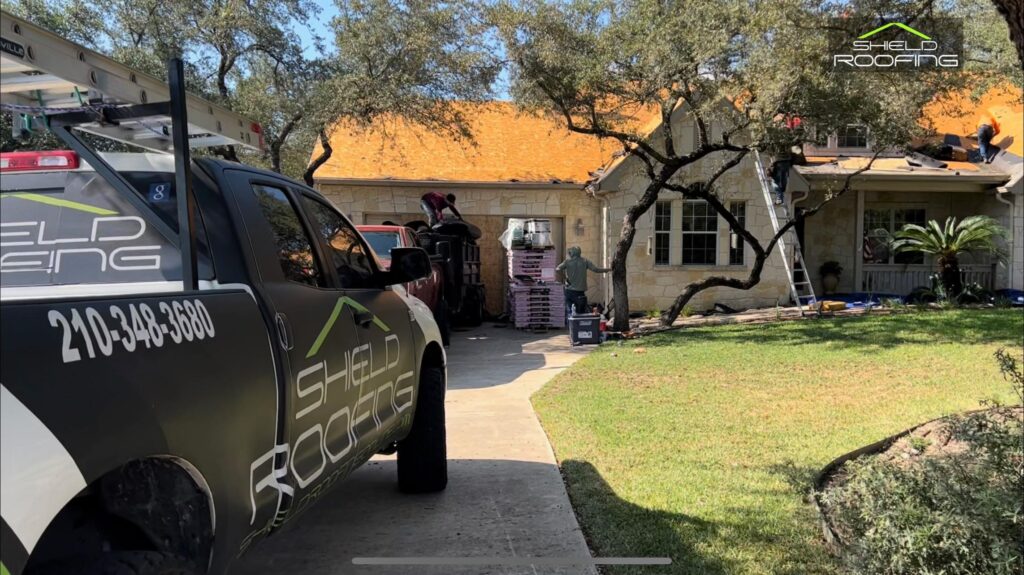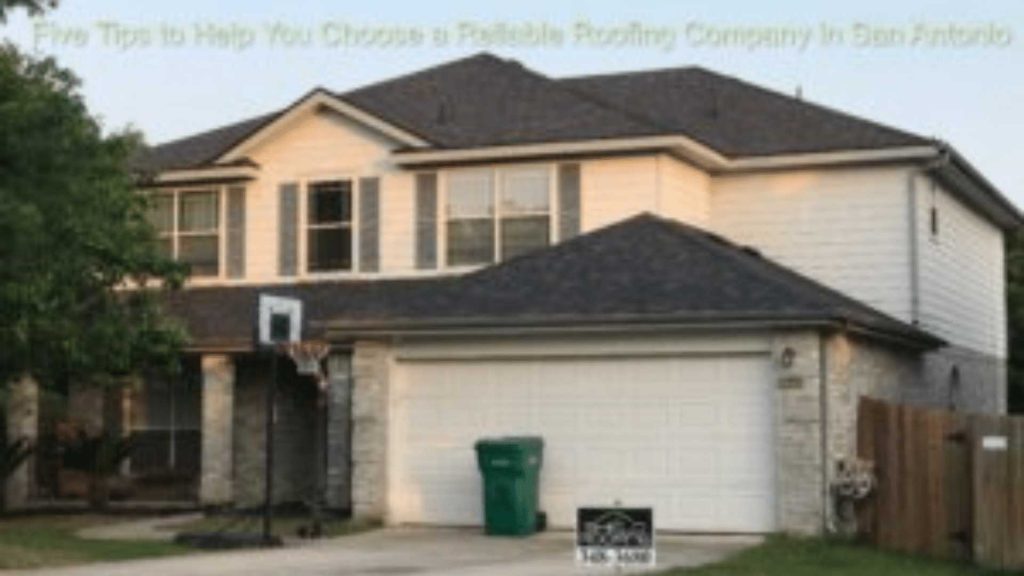Are you a homeowner in San Antonio? If so, it’s important to know the top causes of roof leaks in your area. Roof leaks can cause significant damage to your home and belongings, and prevention is key. In this article, we’ll discuss the top three causes of roof leaks in San Antonio homes and provide tips for prevention and maintenance.
First on the list is damaged or missing shingles. This is a common issue in San Antonio due to the extreme weather conditions, such as high winds and hail. When shingles are damaged or missing, it leaves your roof vulnerable to leaks. It’s important to inspect your roof regularly and replace any damaged or missing shingles as soon as possible. Don’t wait until a leak occurs to take action. By being proactive, you can prevent costly damage and repairs.
Damaged or Missing Shingles
If you’re experiencing a leaky roof, damaged or missing shingles could be the culprit. This is one of the most common causes of roof leaks in San Antonio homes. Shingles can become damaged or go missing due to a variety of factors, such as severe weather conditions such as hail, wind, or heavy rain. If you notice that your shingles are damaged or missing, it’s important to get them repaired or replaced as soon as possible to prevent further damage to your roof and home.
When it comes to shingle repair, you may be tempted to try a DIY approach to save money. While this may be an option for minor repairs, it’s important to note that shingle replacement should be left to the professionals. A professional roofing contractor can ensure that the replacement shingles match the existing ones and are installed correctly. Additionally, severe weather conditions can have a significant impact on the durability of your shingles. Hail, for example, can cause dents and cracks in the shingles, which can lead to leaks over time. It’s important to have your roof inspected by a professional after severe weather conditions to ensure that any damage is identified and repaired promptly.

Clogged Gutters and Downspouts
Clogged gutters and downspouts can be a major headache for homeowners, leading to water damage and potential roof leaks. Regular maintenance and professional cleaning are vital to preventing these issues. Neglecting your gutters and downspouts can result in excess debris buildup, which can cause water to overflow and seep into your roof’s insulation.
To prevent clogged gutters and downspouts, it’s essential to have gutter guards and downspout extensions installed. Gutter guards will stop leaves, twigs, and other debris from entering your gutters, while downspout extensions will direct water away from your home’s foundation. These simple additions can go a long way in keeping your gutters and downspouts in good condition and preventing roof leaks. Remember, taking care of your gutters and downspouts is an investment in your home’s longevity and avoiding costly repairs.
Improperly Installed Flashing
Improperly installed flashing can lead to water seeping into your home’s walls, causing damage that may not be visible until it’s too late. Flashing is a thin layer of material, usually made of metal or plastic, that is installed around openings in the roof and walls, such as chimneys, skylights, and vents. There are different types of flashing, including step flashing, continuous flashing, and drip edge flashing, and each serves a specific purpose. However, if the flashing is not installed correctly, water can easily penetrate the gaps and cause leaks.
To avoid this problem, it’s important to choose the right type of flashing for your roof and to hire a professional to install it. If you notice any signs of a leak, such as water stains on your walls or ceiling, it’s crucial to take action right away. Repair techniques for flashing leaks may include replacing the damaged flashing, sealing the gaps with a waterproof sealant, or using a roof patching kit. By addressing the issue promptly, you can prevent further damage to your home and protect your investment for years to come.
Cracked or Damaged Chimneys
A cracked or damaged chimney can be a source of trouble for homeowners, as it can allow rainwater to seep into the walls and cause structural damage over time. If you notice water stains on your ceiling near your chimney or hear water dripping inside your chimney, it’s time to take action. The longer you wait, the more expensive the repair options could be, and the more damage your home could sustain.
Fortunately, there are several repair options available, depending on the extent of the damage. A professional roofing contractor can assess the damage and provide cost estimates for repairs, which could include resealing the chimney cap or crown, replacing damaged mortar or bricks, or even rebuilding the chimney entirely. Don’t let a cracked or damaged chimney compromise the safety and value of your home. Address the issue promptly to ensure the structural integrity of your roof and chimney.
Age and Wear and Tear
You’ll inevitably face wear and tear on your chimney over time, and it’s important to address any issues promptly to ensure the safety and longevity of your home. The age of your roof and chimney can also contribute to leaks, as regular maintenance and repairs can only go so far. Common signs of wear and tear include cracked or missing mortar, damaged flashing, and crumbling bricks or stones. If you notice any of these signs, it’s important to call a professional to assess the damage and provide an estimate for repair cost.
Repair cost for an aging chimney can vary depending on the extent of the damage and the type of repair needed. In some cases, simple repairs such as repointing or replacing flashing can be relatively inexpensive. However, if the damage is more severe, you may need to consider a full chimney rebuild, which can cost several thousand dollars. While this may seem like a significant expense, it’s important to remember that addressing chimney issues promptly can save you money in the long run by preventing more extensive damage and potential safety hazards.

Prevention and Maintenance Tips
To keep your roof in top condition, it’s important to regularly maintain and inspect it. You can choose to do some maintenance tasks yourself or hire a professional. DIY maintenance includes cleaning out gutters, removing debris from the roof, and trimming nearby trees. However, it’s important to note that some tasks, such as repairing shingles or fixing leaks, should be left to professionals to avoid further damage to your roof.
Regular inspections are also crucial in preventing roof leaks. Inspections should be conducted at least twice a year, once in the spring and once in the fall. During Roof inspections, look for any signs of wear and tear, such as cracks or missing shingles. It’s also important to check for any signs of water damage, such as water stains or mold growth. By conducting regular inspections and addressing any issues promptly, you can ensure your roof stays in good condition for years to come.
